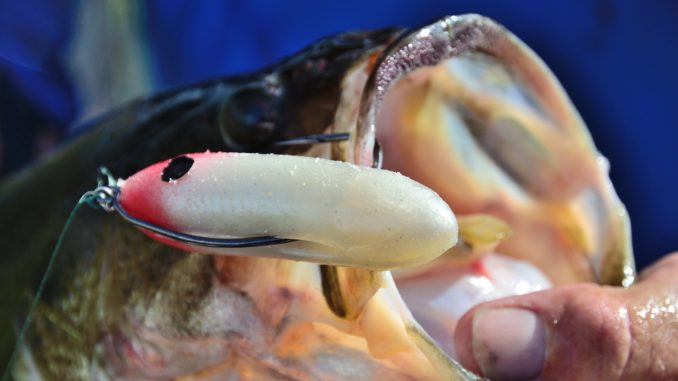
Bass heading to the banks or already there take different angler approaches and different baits. Here are some ideas for the search and spawn phases of spring fishing.
As the sun thaws out the Carolinas after a chilly winter, spring is welcomed, especially by fishermen with an affinity for taming big largemouth bass in shallow water. With endless lure combinations available, there is more than one way to land a heavy stringer.
While conditions may differ from lakes in the mountains to those in lower elevations and even to coastal rivers, spring is go-time, when bass head shallow and have surpassed their normal fighting weights, and lure choices are similar.
Guide Joel Munday of Outdoor Expeditions USA in Holly Springs, N.C., prespawn fishing teak off in March in the lakes closest to his home: Falls of Neuse, Jordan and Shearon Harris.
“Our prespawn bite begins in March on our local lakes,” said Munday (919-669-2959). “It’s not until April usually when our full-fledged spawning begins, and it gets hot and heavy then all the way into May.”
According to the N.C. Wildlife Resources Commission, largemouth bass begin spawning when the water temperatures reach 63 degrees. Munday watches moon phases carefully for the best opportunities to find fish heading to the bank.
“We will have some early spawning during milder winters, but typically, the biggest movements of fish come from around the full and new moons in spring when you start getting buckets of fish moving in,” he said.
While many anglers can’t wait to sight-fish for bass on the beds, some of the best fishing is long before fish make it into super-shallow wates. Munday first hits prespawn fish in deeper water adjacent to the spring bedding habitats.
“We cover some water and target depths between 12 feet and less,” he said, explaining that those depths will hold fish from early spring through early summer. “We never leave this zone alone this time of year.
“Not all the bass will go on the beds at the same time. We have waves of fish that move in all spring. We catch fish that are either done spawning or preparing to move in to spawn. We will fish parallel to the bank and along secondary points, too.”
Covering water is a key to consistently putting prespawn fish in the boat. Munday will back away from the bank and fish water from 5 to 12 feet deep, using lures that he can cast long distances and retrieve quickly to find concentrations of fish: spinnerbaits, lipped and lipless crankbaits are his baits of choice.
“I like half-ounce, light-wire spinnerbaits, half- to ¾-ounce Rat-L-Traps, and crankbaits that run 7 to 12 feet like the Rapala DT series. I work the Rapalas where they grind and kick off the bottom to mimic fleeing crawfish,” said Munday, who will slow down when he finds an area holding fish and fish soft plastics, either Texas-rigged or Carolina-rigged, in colors between naturals like green pumpkin and peanut butter to brighter colors for increased visibility.
“When targeting rocky areas, you can vary your colors a lot to mimic crawfish — like hues of orange and red. And you can use brighter colors for increased visibility to get fish feeding on search baits,” he said.
When bass head in to spawn, they will generally been in water 2 feet deep or less. But not all shallow water is created equal, and not all shallow water is suitable for spawning.
Tory McCallum of Dillon, S.C., is an accomplished angler, especially on the Santee Cooper lakes: Moultrie and Marion, and especially when fish move shallow.
“I spend most of the spring pitching soft plastics on shallow flats and blackwater ponds around the lakes’ perimeter,” McCallum said. “Most of the time, I am fishing in huge areas of grass, lily pads and bulrushes in 2 feet or less.”
He concentrates on fish guarding beds or moving in and around shallow bedding areas. While he will sometimes fish over a dozen flats in a weekend’s time, each one has something in common besides loads of bass using them.
“I fish places with good spawning habitat that have plenty of cover and a good sandy bottom,” he said. “Good habitat will hold spawning fish throughout the spring season.”
Good spawning areas will hold fish year after year and throughout the spring spawn.
“A bunch of fish will use the same area. I might catch five or six one day and then catch 15 a few days later. New fish will come in and recharge the area when others head back out to deep water after spawning. Good places hold fish and will always hold fish,” McCallum said.
While many anglers will use a wide assortment of creature baits and other soft plastics, McCallum utilizes a narrow selection of lures.
“I will use small swimbaits some early in the spring, but I love a 5-inch finesse-style worm the best on a Gamakatsu 3/0 Superline worm hook when they start bedding. It is my bread and butter,” he said.
One of McCallum’s favorites is the 5-inch D.O.A. finesse worm in avocado/red glitter and watermelon seed. He makes selective casts into places near bulrushes and larger holes in the vegetation. He then works his magic, letting the bait fall naturally into the beds; that is the key to getting a fish to bite.
“I throw past the hole and then drop it in there, letting it fall without wiggling it any. You will see your line twitch or move the other way when you get a bite,” McCallum said.
Fish are typically bedding in these areas and eat whatever invades their spawning space.
During the spring, bass are eating and eating well. For the best results, anglers should concentrate on the right stuff to make it count when a true lunker in on deck.

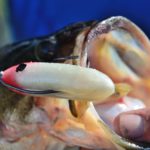
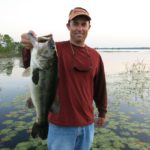
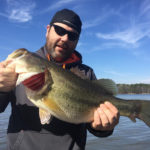
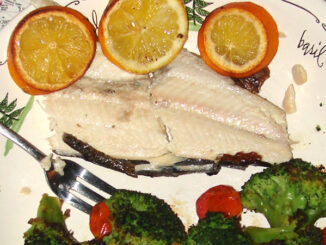

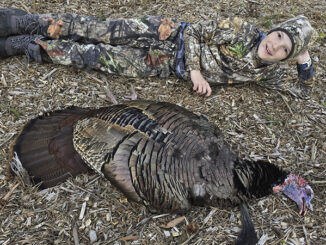

Be the first to comment